Rob Bignell's Blog, page 350
December 14, 2013
Constructing your story’s main character
Typically a  story is about a single character who overcomes some problem. This player in your story is called the main character. Common examples are Dorothy in “The Wizard of Oz,” John in James Baldwin’s “Go Tell It on the Mountain,” and Jessica Fletcher in “Murder, She Wrote.”
story is about a single character who overcomes some problem. This player in your story is called the main character. Common examples are Dorothy in “The Wizard of Oz,” John in James Baldwin’s “Go Tell It on the Mountain,” and Jessica Fletcher in “Murder, She Wrote.”
Main characters usually are the hero of the story. The tale often is told from their viewpoint. Quality main characters typically:
g Possess likeable traits but also have a major flaw – Your main character may be brave, intelligent, a natural leader and handsome, but he also ought to be indecisive, obsessed or hold some other negative quality. Your character runs the risk of being melodramatic (or too perfect) if he doesn’t possess some flaw. Such stories may be fun for kids to read (and possibly even instructive for them) but is not a believable story for an even slightly discerning adult reader, who will view the character as unrealistic.
g Face a challenge that attacks him at his weakest point: his major flaw – To succeed, the main character must grow and develop in such a way that he confronts and overcomes his major flaw. Oftentimes, to overcome his major flaw, he must surrender something of “inestimable value” to himself. By overcoming this inner conflict, the main character should gain something of inestimable worth. Such challenges maximize tension in a story and allows the reader to take something with him when he’s finished the story.
g Overcome conflicts that allow him to grow – All conflicts that the main character faces should serve to point or direct him toward ultimately overcoming his major flaw. By overcoming such challenges, the main character inches closer to realizing what he must do to solve his major flaw, which in turn allows him to overcome the problem that set the story in the motion.
g Don’t give up – Main characters almost always fight to main control of their lives. They want to determine their own destiny.
Need an editor? Having your book, business document or academic paper proofread or edited before submitting it can prove invaluable. In an economic climate where you face heavy competition, your writing needs a second eye to give you the edge. I can provide that second eye.
Related articles
 How do you know when your book is done?
How do you know when your book is done? Use broad conflict to set your story in motion
Use broad conflict to set your story in motion Center on internal flaw for compelling story
Center on internal flaw for compelling story Limit number of key characters in story
Limit number of key characters in story
December 13, 2013
How to promote your book via Facebook
If you don’t have  a personal Facebook page yet, you should give serious consideration to getting one. Facebook is the largest social networking site on the globe. Everyone on Facebook has a page on which they can post updates, photos, and videos about their life. A page can be set up so that either “friends” (and you get to approve who is your friend) or the public can see it. The social networking site offers an excellent way to reach potential readers.
a personal Facebook page yet, you should give serious consideration to getting one. Facebook is the largest social networking site on the globe. Everyone on Facebook has a page on which they can post updates, photos, and videos about their life. A page can be set up so that either “friends” (and you get to approve who is your friend) or the public can see it. The social networking site offers an excellent way to reach potential readers.
To promote your book via Facebook, you’ll have to begin by setting up you personal page. It’s quite easy to do, and Facebook takes you through the entire process with a step-by-step tutorial. It’s also free to join.
Once you set up your personal page, you then can create a page just about your book. This page won’t contain all of those updates, photos and videos about your kids and trip to Mexico that you’ll soon be posting on your personal page.
To set up your business page, you should have jpegs on hand of your book’s cover and some vertical photo that might be used as your “cover.” The book cover will serve as your profile picture. The vertical cover photo could be of you at a book signing, a photo related to what your book is about (for example, a spacecraft orbiting the earth if you’re book is about why we should spend more money on space exploration), or a close-up of the book cover.
You’ll also want to write a description of your book in the “About” section.” This description essentially can be what you’ve placed on your back cover blurb or the home page of your website. Also, there is a spot where you’ll be able to place links to your website and blog, so be sure to do that.
What to post on Facebook? Anything that you might blog. Given this, I essentially post what I write for my Twitter feeds (which are just links to my blog) on Facebook. This may sound redundant, but not everyone on Facebook uses Twitter and vice versa. You’re just covering your bases.
To make Facebook truly useful, you’ll need to get “friends” to maximize the number of people who view your page and will potentially read your book Once you get friends then you can ask them to “like” your business page. Each time you make a post on the Facebook page for your book, it will go out to a “wall” where anyone who “likes” your page can read what you wrote (along with what all of their other friends wrote).
How do you get “friends”? You have to ask them to be your friend via Facebook (it’s a simple click or two of a button). Look for the following people on Facebook to be your friends:
g Family
g Friends (Makes sense, doesn’t it?)
g Colleagues past and present
g Former classmates (high school and college)
g Friends of lots of your friends (You may not know them personally, but you do have something in common!)
g Pages on related subjects and “like” or “friend” them (If you’re book is about coffee, seek out coffeehouses.)
All of your posts show up on each of your friends’ walls, so hopefully others who are not friends will take an interest in your page.
Some savvy Facebook users reduce some of this work simply by making their personal page their book page. If you do this, however, you’re counting on people to buy a book by an author rather than buying a book about a specific subject or from a specific genre. Since you’re a new author, you probably don’t yet have much name recognition to generate many book sales. People will come to you because of the book’s genre and subject matter, not because you wrote it.
Need an editor? Having your book, business document or academic paper proofread or edited before submitting it can prove invaluable. In an economic climate where you face heavy competition, your writing needs a second eye to give you the edge. I can provide that second eye.
Related articles
 Offer your readers a photo gallery page
Offer your readers a photo gallery page Does your book cover design matter for ebooks?
Does your book cover design matter for ebooks? How to promote multiple books on your website
How to promote multiple books on your website Attract and keep readers via blogging
Attract and keep readers via blogging
December 12, 2013
Why you want an LCCN for your book
If you plan 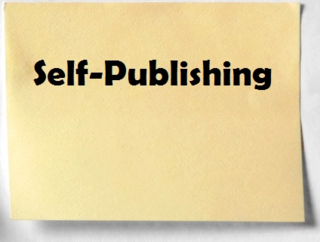 to sell your book to libraries, you’ll need a Library of Congress Catalog Number, aka an LCCN.
to sell your book to libraries, you’ll need a Library of Congress Catalog Number, aka an LCCN.
You can order your own through the website of the Cataloging in Publication Division of the Library of Congress. The best news is that applying for an LCCN is free, so it makes sense to simply add an LCCN when you self-publish a book.
A book must be longer than 50 pages to qualify for an advance purchase of LCCN. Because of this, many children’s books typically don’t qualify.
Need an editor? Having your book, business document or academic paper proofread or edited before submitting it can prove invaluable. In an economic climate where you face heavy competition, your writing needs a second eye to give you the edge. I can provide that second eye.
Related articles
 Place commas inside quotation marks
Place commas inside quotation marks How long and frequent should author's blog be?
How long and frequent should author's blog be? Fourth writing guidebook hits store shelves
Fourth writing guidebook hits store shelves Editing client publishes near-future novel
Editing client publishes near-future novel Editing client publishes new short story collection
Editing client publishes new short story collection
December 11, 2013
Making sense of sensuous vs. sensual
Whenever I 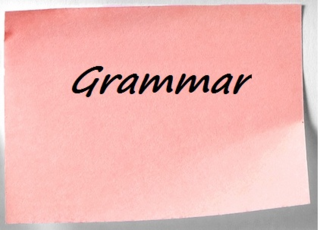 see the words sensuous and sensual in a client’s manuscript, my skin gets prickly all over. They often mix up the two words.
see the words sensuous and sensual in a client’s manuscript, my skin gets prickly all over. They often mix up the two words.
Sensuous means to appeal to the senses or to have strong sensory appeal, as in The Klingon found the Grapok sauce sensuous.
Sensual pertains to fleshly or sexual appeal, as in The Klingon warrior found B’etor’s ample bosom quite sensual.
The problem arises, I suspect, because sensuous sounds kind of sexy while sensual sounds comparatively a bit blah. But that’s just my personal reaction to the words.
Need an editor? Having your book, business document or academic paper proofread or edited before submitting it can prove invaluable. In an economic climate where you face heavy competition, your writing needs a second eye to give you the edge. I can provide that second eye.
Related articles
 Breaking the barrier: Hurdle vs. hurtle
Breaking the barrier: Hurdle vs. hurtle Improve your writing by dumping fuzzy words
Improve your writing by dumping fuzzy words Get ideas from you head onto paper
Get ideas from you head onto paper Getting concrete with literally vs. figuratively
Getting concrete with literally vs. figuratively Types of academic papers you could write
Types of academic papers you could write
December 10, 2013
Stay inbounds when writing descriptively
The following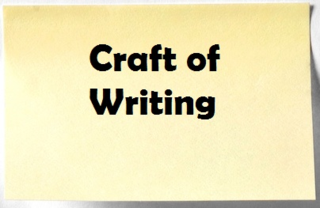 entry originally was written for and appeared on EatSleepWrite.com.
entry originally was written for and appeared on EatSleepWrite.com.
Sometimes in our efforts to succeed, we overdo it – While training for a marathon, we run too many miles at first rather than build our strength, or while baking a cake we add too much of one ingredient in hopes of spicing it up. The results usually are disastrous and require that we start over.
So it is with descriptive writing as well. As striving to deliver vivid, engaging writing, we actually can make our writing sound worse.
There are a number of ways that writers can overdo it. The most common errors among novices are:
g Fat writing – This involves using extraneous and showy verbiage. Writing instructors often refer to it as “purple prose.” For example, Galen’s mysterious, stygian eyes gawped in utter awe at Samantha’s pure, angelic being.
g Foreground to – Writers shouldn’t draw attention to some object in their story purely for artistic effect. This might mean you’ve written a poetic-sounding but meaningless image, such as gelatinous sneer. Doing so actually slows the story by decreasing the dramatic tension.
g Pushbutton words – Rather than actually describe one’s physical responses, the writer resorts to overused words intended to invoke an emotion, like dance as in And so the slow dance of their love began. Typically they don’t invoke any response other than a yawn.
Just as you want to know how to improve your descriptive writing by recognizing techniques that can make your story more vibrant, so you also want to be aware of when you’ve gone too far. It’s like a football or a basketball player being aware of the out-of-bounds line.
Need an editor? Having your book, business document or academic paper proofread or edited before submitting it can prove invaluable. In an economic climate where you face heavy competition, your writing needs a second eye to give you the edge. I can provide that second eye.
Related articles
 Improve your writing by dumping fuzzy words
Improve your writing by dumping fuzzy words What is a writer's 'natural' temperament?
What is a writer's 'natural' temperament? Writers can blog about variety of topics
Writers can blog about variety of topics Editor guest blogger at Eat, Sleep, Write
Editor guest blogger at Eat, Sleep, Write Get ideas from you head onto paper
Get ideas from you head onto paper
December 9, 2013
Editing client publishes first fantasy novel
A recent 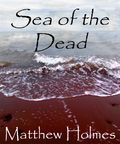 editing client of mine, Canadian Matthew Holmes, has published his first fantasy novel, “Sea of the Dead.” The book tells the story of Michael, the reluctant high prince of Jenoth, who finds himself forced into a quest to recover the magic that his people lost long ago and to restore their once great civilization. Assembling an unlikely band to accompany him on his journey, he faces the greatest challenges ever known to himself or his kind. The book is available online in a variety of ebook formats.
editing client of mine, Canadian Matthew Holmes, has published his first fantasy novel, “Sea of the Dead.” The book tells the story of Michael, the reluctant high prince of Jenoth, who finds himself forced into a quest to recover the magic that his people lost long ago and to restore their once great civilization. Assembling an unlikely band to accompany him on his journey, he faces the greatest challenges ever known to himself or his kind. The book is available online in a variety of ebook formats.
Need an editor? Having your book, business document or academic paper proofread or edited before submitting it can prove invaluable. In an economic climate where you face heavy competition, your writing needs a second eye to give you the edge. I can provide that second eye.
Amazon.com Widgets
Related articles
 Editing client publishes near-future novel
Editing client publishes near-future novel Editing client releases baseball novel
Editing client releases baseball novel Editing client releases first novel
Editing client releases first novel Editing client publishes new short story collection
Editing client publishes new short story collection When should you start a new novel chapter?
When should you start a new novel chapter?
December 8, 2013
Five Great Quotations about Editing
“It is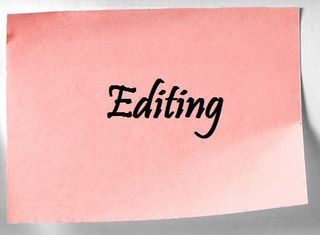 perfectly okay to write garbage – as long as you edit brilliantly.” – C. J. Cherryh
perfectly okay to write garbage – as long as you edit brilliantly.” – C. J. Cherryh
PROOF-READER, n. A malefactor who atones for making your writing nonsense by permitting the compositor to make it unintelligible. – Ambrose Bierce, “The Devil’s Dictionary”
I believe more in the scissors than I do in the pencil. – Truman Capote
“Nothing, not love, not greed, not passion or hatred, is stronger than a writer’s need to change another writer's copy.” – Arthur Evans
“Books aren’t written, they’re rewritten. Including your own. It is one of the hardest things to accept, especially after the seventh rewrite hasn’t quite done it...” – Michael Crichton
Need an editor? Having your book, business document or academic paper proofread or edited before submitting it can prove invaluable. In an economic climate where you face heavy competition, your writing needs a second eye to give you the edge. I can provide that second eye.
Related articles
 Smiling Tree Writing interviews IRES editor
Smiling Tree Writing interviews IRES editor Start your story with solid narrative hook
Start your story with solid narrative hook Place commas inside quotation marks
Place commas inside quotation marks Get ideas from you head onto paper
Get ideas from you head onto paper Writers can blog about variety of topics
Writers can blog about variety of topics
December 7, 2013
When should you start a new novel chapter?
When should  you start a new chapter in your novel? Does a new scene simply require a line break or does it demand a whole new page?
you start a new chapter in your novel? Does a new scene simply require a line break or does it demand a whole new page?
There's no hard and fast rule for when to end or start a new chapter. Like word choice or sentence length, it's a matter of feel, of craftsmanship.
Still, there ought to be a good reason for beginning and ending a chapter. Given this, being aware of some of the reasons why you might end/start a chapter is helpful.
Among the more common reasons for beginning a new chapter are to:
g Show significant new action – While scenes might occur only a short length of time apart from one another or even occur concurrent with one another, a chapter signifies a major new action or movement in the story. For example, one chapter might have the heroes planning an assault on a warehouse to free someone who has been kidnapped; the next chapter has our heroes actually assaulting the warehouse.
g Enhance the dramatic effect – A cliffhanger is a good example of this. A chapter could end with a character in a situation that he likely can't get out of it (such as being corned by an assassin), and the next chapter then could show how he overcomes the crisis (such as asking as a condemned man to enjoy a last cigarette, which actually delivers a dart with an instant knockout potion in it).
g Reveal important information – When our main character learns something of such great significance that he must radically change his view or plan to resolve a problem, a chapter likely can end. For example, a wife about to sit down with her husband to talk about their lack of communication might learn he is cheating on her.
g Present new point of view – When the perspective character in the novel shifts, then a new chapter should begin. If you are telling the story from the point of view of a commander on a spaceship and then the commanding officer on the planet below, when switching between action occurring on the ship and the planet you may want to start a new chapter.
Perhaps because television shows have acts that are equal in length – it's always the same number of minutes between commercials – new novelists these days feel they also must have chapters of the same length. While that might work for some stories, for others it is an artificiality that actually is detrimental to the story by disrupting its flow.
In addition, novels need not be divided into chapters at all. Though uncommon, sometimes shorter novels (often of less than 150 pages) can simply use line breaks between scenes rather than resort to chapters that are only three or four pages long. In longer novels, the book may simply be divided into parts (Part I, Part II, Part III, etc.) with each of those sections treated as a long short story.
Need an editor? Having your book, business document or academic paper proofread or edited before submitting it can prove invaluable. In an economic climate where you face heavy competition, your writing needs a second eye to give you the edge. I can provide that second eye.
Related articles
 Think of your story as if a stage production
Think of your story as if a stage production Center on internal flaw for compelling story
Center on internal flaw for compelling story Use broad conflict to set your story in motion
Use broad conflict to set your story in motion Limit number of key characters in story
Limit number of key characters in storyDecember 6, 2013
Editing client releases first novel
A recent editing  client of mine, Shaneschia Kay, has released her first novel, “Good Girl, Bad Habits: The Story of a Powerful and Intense Journey.” The book tells the story of a Ni’raisha, a young woman who comes under the spell of a drug dealer and soon finds her life spinning out of control for it. The novel is available online in paperback.
client of mine, Shaneschia Kay, has released her first novel, “Good Girl, Bad Habits: The Story of a Powerful and Intense Journey.” The book tells the story of a Ni’raisha, a young woman who comes under the spell of a drug dealer and soon finds her life spinning out of control for it. The novel is available online in paperback.
Need an editor? Having your book, business document or academic paper proofread or edited before submitting it can prove invaluable. In an economic climate where you face heavy competition, your writing needs a second eye to give you the edge. I can provide that second eye.
Amazon.com Widgets
Related articles
 How do you know when your book is done?
How do you know when your book is done? Start your story with solid narrative hook
Start your story with solid narrative hook Work off the fat from overwritten descriptions
Work off the fat from overwritten descriptions Editing client publishes new short story collection
Editing client publishes new short story collection Editing client publishes near-future novel
Editing client publishes near-future novel
December 5, 2013
Editing client releases baseball novel
A recent editing 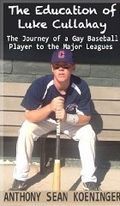 client of mine, Anthony Sean Koeninger, has released his latest novel “The Education of Luke Cullahay: The Journey of a Gay Baseball Player to the Major Leagues.” Largely set in Southern California, the novel follows high school then college athlete Luke Cullahay as he struggles to reconcile his gay identity with his Catholic faith and the homophobia of baseball. The book is available online in paperback.
client of mine, Anthony Sean Koeninger, has released his latest novel “The Education of Luke Cullahay: The Journey of a Gay Baseball Player to the Major Leagues.” Largely set in Southern California, the novel follows high school then college athlete Luke Cullahay as he struggles to reconcile his gay identity with his Catholic faith and the homophobia of baseball. The book is available online in paperback.
Need an editor? Having your book, business document or academic paper proofread or edited before submitting it can prove invaluable. In an economic climate where you face heavy competition, your writing needs a second eye to give you the edge. I can provide that second eye.
Related articles
 Five Great Quotations about the Power of Writing
Five Great Quotations about the Power of Writing Getting concrete with literally vs. figuratively
Getting concrete with literally vs. figuratively Start your story with solid narrative hook
Start your story with solid narrative hook Editing client publishes new short story collection
Editing client publishes new short story collection Editing client publishes near-future novel
Editing client publishes near-future novel



